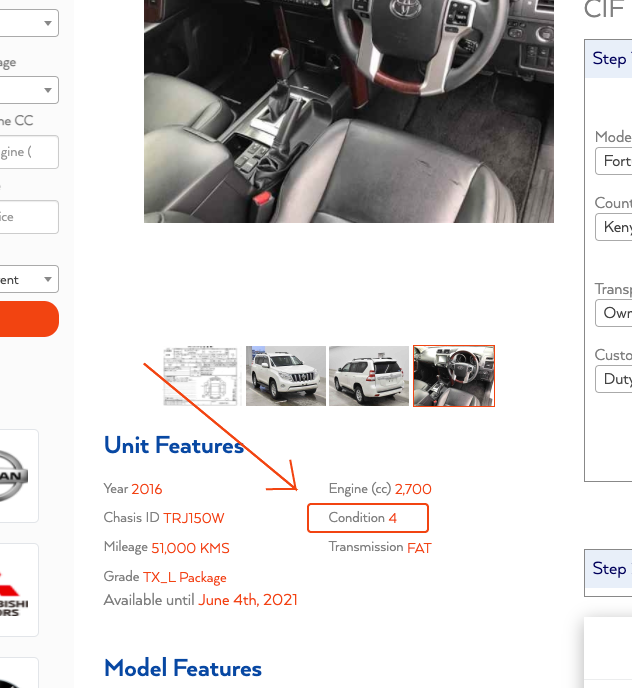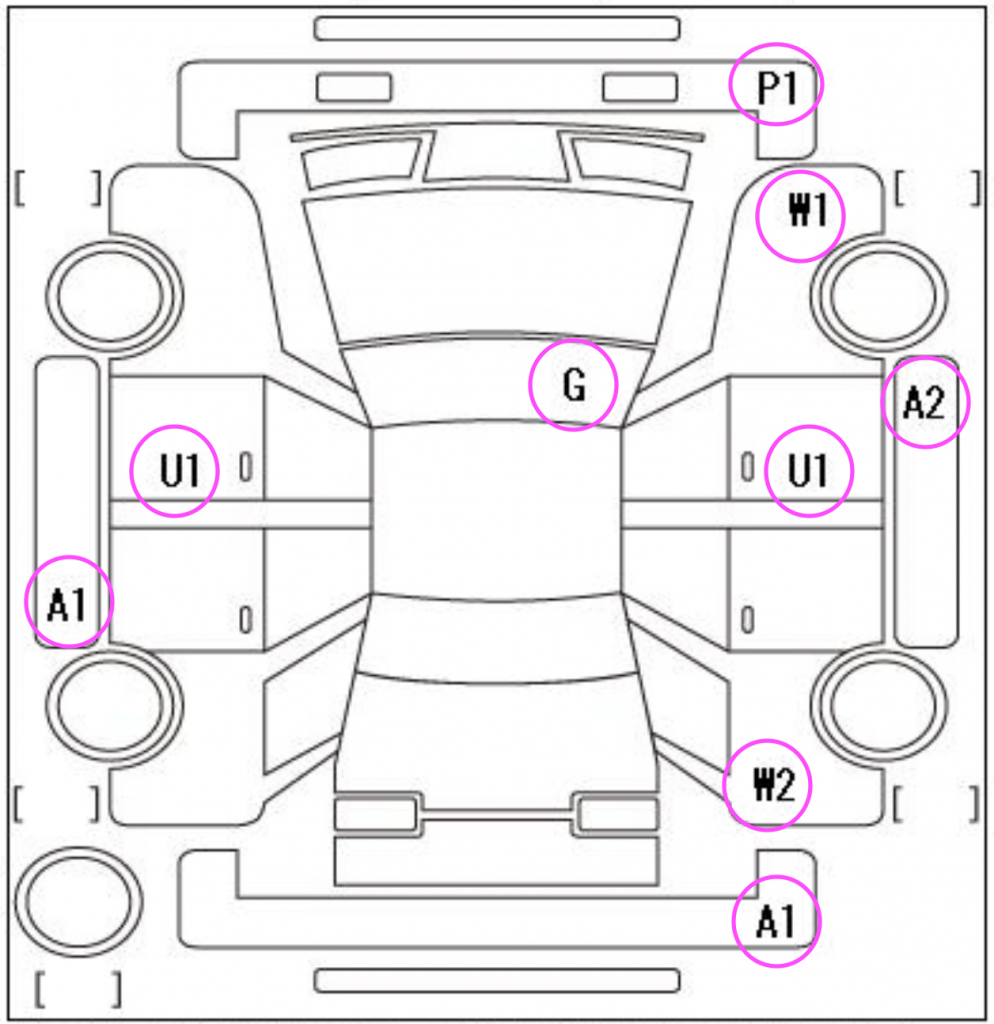Used car Auction grade is the overall assessment of a car given by the Japanese car auction house’s inspectors. There are currently over 115 auction house locations that test and provide the auction grades base on the general condition of the car or vehicle. Though different houses have various methods of determining each grade; the systems are likely similar and they give similar results.
The grades are usually showed as numbers or letters for the overall grade based on the visible and mechanical condition. Some auctions use Letter –A, B, C, D or E to describe the exterior and/or interior condition of the car, in addition to the overall grade, where A>B>C>D>E.
Overall Grade
- Grade 6 or higher or “S”: Considered as brand new, less than 12 months of old, and/or with under 10,000km.
- Grade 5: As good as new, with exceptionally low mileage
- Grade 4.5: Very slightly used, mileage of up to 100,000km.
- Grade 4: Used with the slightest visible flaws.
- Grade 3.5: Good condition with visible flaws.
- Grade 3: Average condition with light damages.
- Grade 2 or 1: Poor condition with significant damages, but the car is functional.
- Grade R or RA: R stands for vehicles with repair history or major modification. RA is for minor accident cars that has been fully repaired.
You can find the auction grade in places, shown in below pictures.

Interior or Exterior grade
Used car auction grade for the interior/exterior is as follows:
Interior Grading:
- A – New vehicle’s condition.
- B – Car is in good condition, the interior looks nice and tidy.
- C – Small food’s stains or cigarette’s holes could be found inside the car.
- D – Inner vehicle consists of cigarette’s mark, stains, tears or smell.
- E – Interior of the car is in bad condition. Grade E means all mentioned above and even worse.
Exterior Grading:
- A – A pristine exterior condition.
- B – Some small scratches up to 15cm could be found.
- C – Scratches up to 30 cm or dents could be seen.
- D – Visible scratches, rust or corrosion are detected.
- E – The car is in bad shape. Rust, corrosion and exterior breakdowns are plenty.
For advanced-level buyers
If an auction sheet is available, you can know more about car condition, using the below terms and the car inspection marking (image below), indicated by the inspectors.

A1 Small scratch A2 Scratch A3 Big scratch B Dent with scratch E1 Few Dimples E2 Several Dimples E3 Many Dimples U1 Small dent U2 Dent U3 Big dent W1 Hardly detectable repair mark/wave W2 Repair mark/wave W3 Visible repair mark/wave S1 Rust S2 Heavy Rust X Must be replaced XX Replaced B1 Distorted radiator back panel or core support B2 Highly distorted radiator back panel or core support Y1 Small crack or hole Y2 Crack or hole Y3 Big crack or hole X1 Small windshield crack R Repaired windshield crack RX Repaired windshield crack (must be replaced) X Windshield crack (must be replaced) G Stone chip in glass C1 Corrosion C2 Heavy corrosion P Marked paint H Faded paint
This is necessary information for you to understand about your car before purchasing it. We hope this information serves you well in finding a good car from Japan. If you like the content or if you think this is good information, please leave a comment below and share this article with your friends. Have fun & good luck with your car hunt!

I just want to say I’m all new to weblog and truly loved this web-site. Probably I’m want to bookmark your blog . You absolutely have great posts. Thank you for sharing with us your web page.